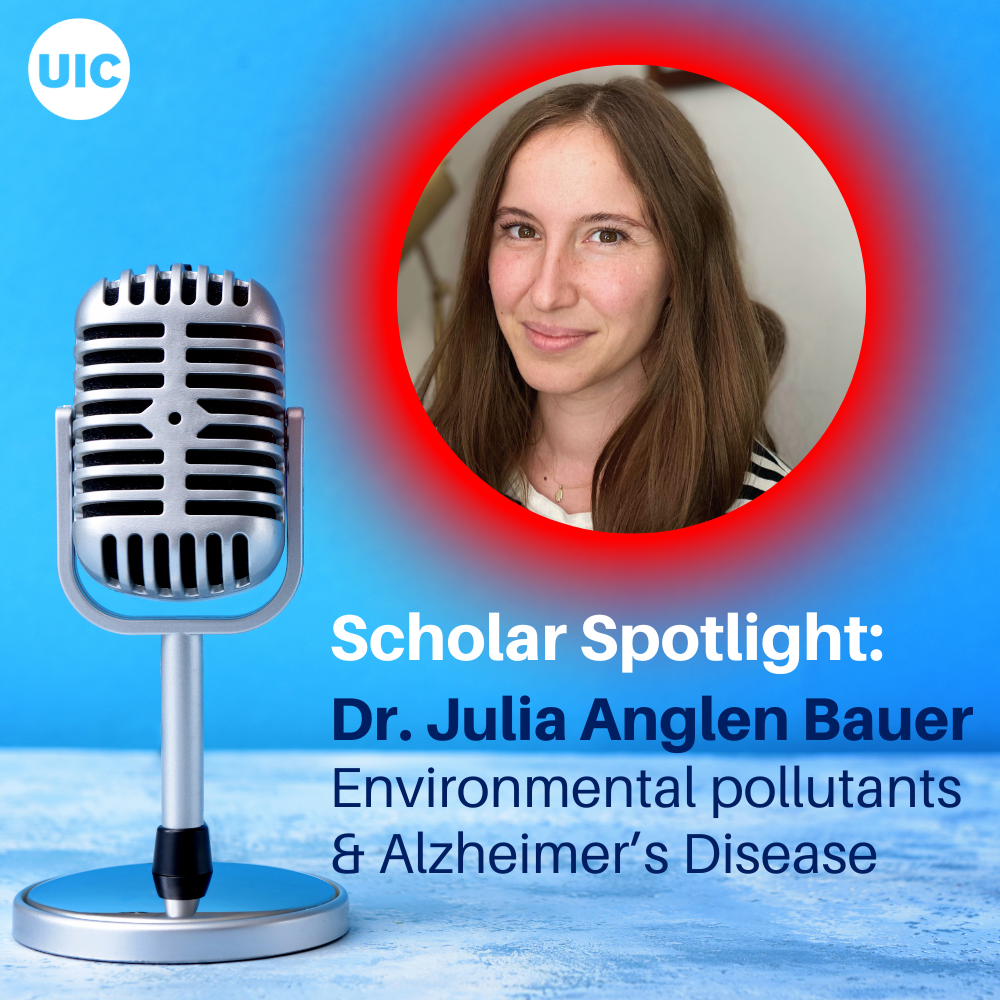Scholar Spotlight: Dr. Julia Anglen Bauer, Enivronmental Pollutants & Alzheimer’s Disease
Collaborative Endeavors Podcast: Season 4, Episode 3
Modified on October 29, 2024

Dr. Julia Anglen Bauer’s research investigates the connections between environmental pollutants and Alzheimer’s disease, with a focus on the U.S. Latino community.
About 7 million people in the United States are currently living with Alzheimer’s disease. The Latino community faces an even higher risk of developing the disease, with prevalence expected to increase up to 800% by 2060.
“We don’t really know why there is a disproportionate burden, but it may involve the increased prevalence of cardiometabolic conditions- such as diabetes and obesity- in the Latino community, as well as other modifiable risk factors that may include exposure to environmental contaminants through diet and occupation,” Bauer said.
A CCTS KL2 scholar and assistant professor in the department of epidemiology and biostatistics in the University of Illinois Chicago’s School of Public Health, Bauer’s work builds on the premise that certain chemicals, such as persistent organic pollutants (POPs), accumulate in the body over a lifetime and may influence the development of Alzheimer’s much later.
Using innovative data models, Bauer aims to compare associations across correlated data in both blood samples and brain images with the goal of detecting Alzheimer’s risk decades before symptoms manifest. Ideally, this translational science approach could be repurposed by researchers examining an array of chemical exposures in the body, or even multiple proteins in blood.
“I feel like this work that I’m doing will really impact Alzheimer’s disease risk and lay the foundation for thinking about midlife as a critical window for disease pathology,” Bauer said. “I want to work with people that have environmental justice concerns to change not only the pathological mechanisms that we’ve been talking about in terms of blood markers and chemicals, but also how to help communities live healthier lives.”